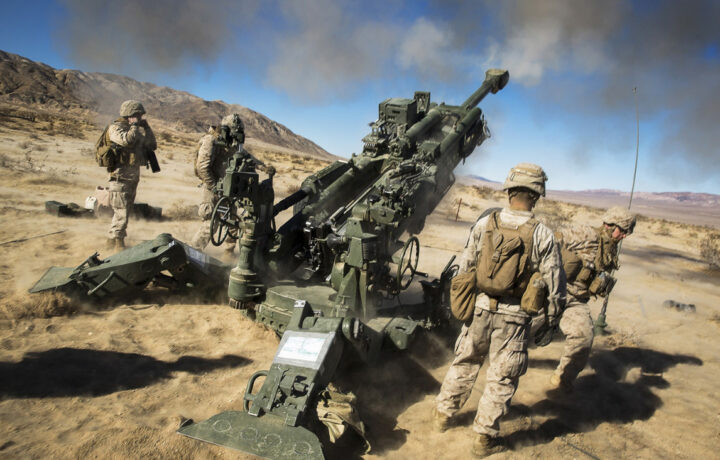The lightweight M777 155mm Howitzer is currently used by the ground forces of Australia, Canada, Colombia, India, Saudi Arabia, Ukraine, and the United States. It was first used in combat during the War in Afghanistan.
Known as the Triple “7,” it is noted for packing a 16,000-pound gun into a small package that is more mobile than other artillery pieces. The United States supplied around 126 of the mobile artillery pieces, along with 226,000 rounds of ammunition to Ukraine.
This month, the U.S. Army contracted BAE Systems to produce a new batch of lightweight howitzer major structures, under an Undefinitized Contract Action (UCA), which is currently limited to $50 million. This will allow BAE Systems to start delivering on the program, while finalizing the details of the contract and its total value with the customer. The contractor will further work with its supply chain in the UK and the U.S. to produce the major M777 titanium structures, which form the basis of the gun.
The first major structures for the Triple 7 are due to be delivered in 2025.
“This restart of production of the major structures for the U.S. Army’s M777s comes at a critical time, with howitzers deployed on operations in Ukraine. The U.S., as well as Canada and Australia, has donated M777s to Ukraine. We understand that they are performing well and we are very proud of our role in supporting our allies,” said John Borton, vice president and general manager of BAE Systems Weapons Systems UK, which manages the manufacture and assembly of the M777 lightweight howitzers.
“The M777 will remain at the forefront of artillery technology well into the future through the use of technical insertions, long-range precision guided munition developments, and flexible mobility options,” Borton added.
The M777 structures had been previously produced in Barrow-in-Furness in Britain, with assembly and testing taking place in Hattiesburg, Mississippi, which has been closed for roughly a decade.
According to a report from Defense News, the orders from the U.S. Army slowed down over the last decade, while the service ordered its final 18 guns in 2019. BAE delivered that howitzer to the service in February 2023.
The company has not stated where future production would take place. However, it is unlikely that the M777 production could return to Barrow-in-Furness, as it is now almost entirely dedicated to the Royal Navy’s Dreadnought-class submarine program.
Reducing the Weight
Thanks to the use of titanium, which has a high strength to weight ratio and a high resistance to corrosion, the M777 is about half the weight of other 155mm towed howitzers. As a result, the M777 can be transported by helicopter sling-load, transport aircraft such as the Lockheed C-130 Hercules, or towed by air-braked vehicles weighing over 2.5 tonnes (5,500 lb), including as the FMTV and MTVR medium tactical vehicles.
According to BAE, this can provide a rapid reaction capability and deliver decisive firepower when needed most in sustained combat conditions. The M777 is the only battle-proven 155mm lightweight howitzer in the world in service today.
There more than 1,250 M777s in service with ground forces in the United States, Ukraine, the Americas, Australia and India.
The M777A1 and M777A2 are noted for employing the digital fire-control system similar to that found on self-propelled howitzers such as the M109A6 Paladin to provide navigation, pointing and self-location, allowing it to be put into action quickly. The minimum gun crew required is five, compared to a previous nine, while the normal crew is eight. However, with a minimal emergency crew, the rate of fire is decreased accordingly.
More M777 Ammo on the Way
It isn’t just the lightweight howitzer major structures that the U.S. military may need. As previously reported, the U.S. Army has faced an ordnance shortage, and last year announced that it would boost production of the 155mm artillery shells for the M777 more than six-fold – to 85,000 a month – by fiscal 2028. The shells are currently produced at the Iowa Army Ammunition Plant in Des Moines County, IA. The facility, which is part of the U.S. Army Joint Munitions Command is currently operated by American Ordnance, LLC.
That facility also produces a variety of tank rounds, missile warheads, and other ordnance.




